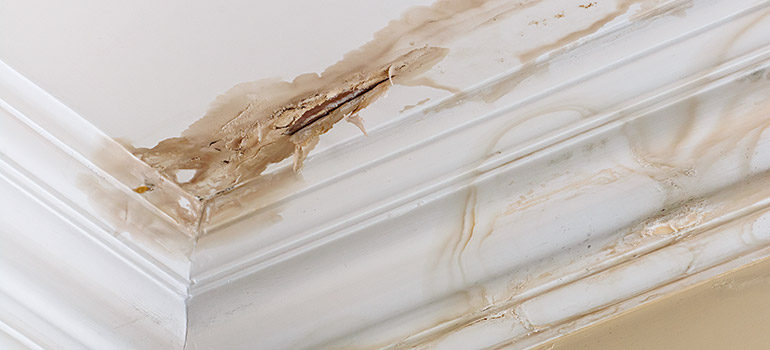6 Water Damage Reconstruction Do's and Don'ts.
6 Water Damage Reconstruction Do's and Don'ts.
Blog Article
What're your thoughts concerning 5 Home Safety Tips To Reduce The Risk Of Fire And Water Damage?

Water gives life, but water breach on some parts where it's not supposed to be can result in damages as well as hassle. In enhancement, homes with water damage scent mildewy and old.
Water can originate from lots of sources like tropical cyclones, floods, ruptured pipes, leakages, and sewage system problems. It's better to have a functioning knowledge of safety and security precautions if you have water damages. Right here are a few standards on how to take care of water damage.
Do Prioritize Residence Insurance Coverage Coverage
Seasonal water damages can come from floods, seasonal rainfalls, as well as wind. There is additionally an incident of an abrupt flood, whether it originated from a defective pipeline that all of a sudden breaks into your residence. To safeguard your residence, get house insurance policy that covers both acts of God such as all-natural calamities, as well as emergency situations like broken plumbing.
Do Not Forget to Shut Off Energies
When disaster strikes as well as you remain in a flood-prone location, switch off the major electric circuit. Switching off the power avoids
electrical shocks when water can be found in as water works as a conductor. Don't neglect to turn off the main water line valve as a way to stop even more damages.
If the floodwaters are getting high, maintain your furnishings secure as they can move around and also cause added damage.
Do Keep Proactive as well as Heed Climate Alerts
If you live in an area plagued by floodings, stay prepared and aggressive at all times. Pay attention to the news and discharge warnings if you live near a body of water like a river, lake, or creek .
Don't Disregard the Roof
Your roofing professional should take care of the malfunctioning gutters or any other indications of damages or weakening. An inspection will stop water from moving down your wall surfaces and also soaking your ceiling.
Do Take Note Of Little Leakages
There are red flags that can draw your focus and also suggest to you some weakened pipes in your home. Signs of red flags in your pipelines consist of bubbling paint, peeling wallpaper, water streaks, water stains, or trickling noises behind the walls. Repair and also evaluate your plumbing fixed before it results in huge damage to your residence, funds, as well as a personal headache.
Don't Panic in Case of a Burst Pipeline
Keeping your presence of mind is vital in a time of situation. Worrying will only compound the trouble since it will stifle you from acting quickly. Panic will additionally provide you added stress. Timing is vital when it pertains to water damage. The longer you wait, the even more damage you can anticipate as well as the most awful the results can be. Quickly closed off your primary water valve to cut off the resource as well as protect against more damages if a pipeline bursts in your residence. Unplug all electric outlets in the area or turn off the breaker for that part of the house. Call a respectable water damage repair professional for support.
Water offers life, but water intrusion on some parts where it's not expected to be can result in damages and also aggravation. In enhancement, residences with water damages scent mildewy as well as old.
Seasonal water damages can come from floodings, seasonal rainfalls, and also wind. Indicators of red flags in your pipelines include bubbling paint, peeling wallpaper, water streaks, water spots, or leaking noises behind the walls. If a pipe bursts in your home, instantly shut off your main water shutoff to cut off the source as well as prevent even more damage.
Some Do's & Don't When Dealing with a Water Damage
DO:
Make sure the water source has been eliminated. Contact a plumber if needed. Turn off circuit breakers supplying electricity to wet areas and unplug any electronics that are on wet carpet or surfaces Remove small furniture items Remove as much excess water as possible by mopping or blotting; Use WHITE towels to blot wet carpeting Wipe water from wooden furniture after removing anything on it Remove and prop up wet upholstery cushions for even drying (check for any bleeding) Pin up curtains or furniture skirts if needed Place aluminum foil, saucers or wood blocks between furniture legs and wet carpet Turn on air conditioning for maximum drying in winter and open windows in the summer Open any drawers and cabinets affected for complete drying but do not force them open Remove any valuable art objects or paintings to a safe, dry place Open any suitcases or luggage that may have been affected to dry, preferably in sunlight Hang any fur or leather goods to dry at room temperature Punch small holes in sagging ceilings to relieve trapped water (don't forget to place pans beneath!); however, if the ceiling is sagging extremely low, stay out of the room and we'll take care of it DO NOT:
Leave wet fabrics in place; dry them as soon as possible Leave books, magazines or any other colored items on wet carpets or floor Use your household vacuum to remove water Use TV's or other electronics/appliances while standing on wet carpets or floors; especially not on wet concrete floors Turn on ceiling fixtures if the ceiling is wet Turn your heat up, unless instructed otherwise

As a reader on How To Prevent Fire And Water From Ruining Your Holiday Season, I think sharing that excerpt was essential. I beg you set aside a second to promote this blog entry if you enjoyed reading it. Many thanks for your time. Visit again soon.
Report this page